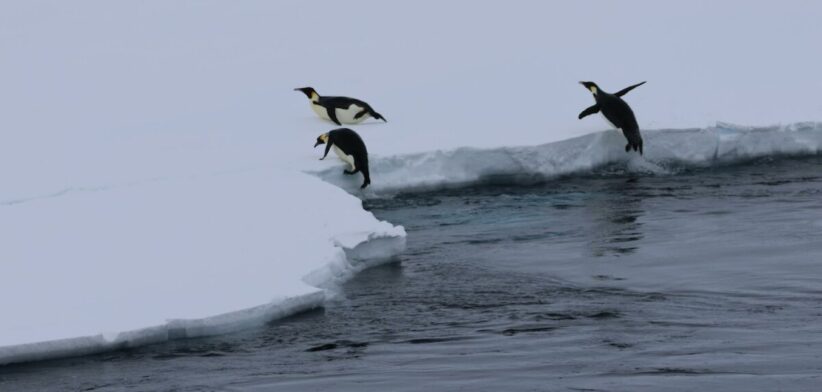Record low sea-ice coverage in Antarctica is signalling a quantum shift in global climate, according to new Australian-led research.
Australian Antarctic Program Partnership oceanographer Edward Doddridge headed an international team which assessed the impacts of extreme summer sea-ice lows.
Dr Doddridge said the results indicated a “regime shift” to a new state of diminished Antarctic sea-ice coverage which would have impacts across climate, ecological and societal systems.
He said the impacts included ocean warming, increased iceberg calving, habitat loss and sea-level rise, and effects on fisheries and Antarctic tourism.
“Antarctic sea ice provides climate and ecosystem services of regional and global significance,” Dr Doddridge said.
“There are far reaching negative impacts caused by sea-ice loss. However, we do not sufficiently understand the baseline system to be able to predict how it will respond to the dramatic changes we are already observing,” he said.
“To predict future changes, and to potentially mitigate the negative impacts of climate change on Antarctica, we urgently need to improve our knowledge through new observations and modelling studies.”
Dr Doddridge said identified three key impacts of sea-ice loss:
- Reduced summer sea-ice cover exposes more of the ocean to sunlight. This leads to surface water warming that promotes further sea-ice loss. Ocean warming increases melting under glacial ice shelves, which could lead to increased iceberg calving. Warmer water also affects the flow of deep-water currents that help move ocean heat around the globe, influencing the planet’s climate.
- Sea-ice loss exposes the ice shelves that fringe the Antarctic continent to damaging ocean swells and storms. These can weaken the ice shelves, leading to iceberg calving. As ice shelves slow the flow of ice from the interior of the Antarctic continent to the coast, iceberg calving allows this interior ice flow to speed up, contributing to sea-level rise.
- Sea ice provides breeding habitat for penguin and seal species, and a refuge for many marine species from predators. It is also an important nursery habitat and source of food (sea-ice algae) for Antarctic krill – an important prey species for many Southern Ocean inhabitants. Adverse sea-ice conditions that persist over several seasons could see population declines in these sea-ice dependent species.
He said the research team also identified socio-economic and wellbeing impacts.
“For example, shorter sea-ice seasons will reduce the window for over-ice resupplies of Antarctic stations.
“There could also be increased shipping pressures on the continent, including from alien species incursions, fuel spills and an increase in the number and movement of tourist vessels to and from new locations.”
Read and in-depth feature: Antarctic Sea Ice in Crisis.








